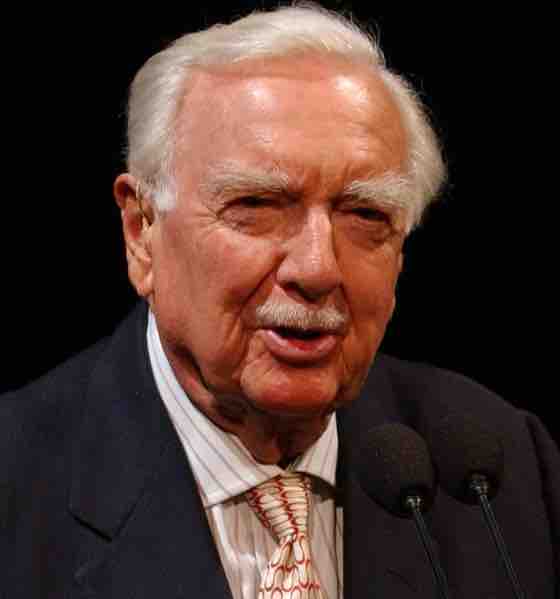Television news
Television news refers to disseminating current events via the medium of television. A "news bulletin" or a "newscast" are television programs lasting from seconds to hours that provide updates on world, national, regional, or local news events. Television news is very image-based, showing video of many of the events that are reported. Television channels may provide news bulletins as part of a regularly scheduled news program. Less often, television shows may be interrupted or replaced by breaking news ("news flashes") to provide news updates on current or sudden events of great importance. Walter Kronkite is one of the iconic figures in television anchoring .

Walter Cronkite
Walter Cronkite, the iconic anchor of CBS Evening News.
Structure, content and style
Newscasts, also known as bulletins or news programs, differ in content, tone, and presentation style depending on the format of the channel on which they appear as well as their timeslot. In most parts of the world, national television networks will have network bulletins featuring national and international news. The top rating shows will often be in the evening at "prime time", but there are also often breakfast time newscasts of two to three hours in length. Rolling news channels broadcast news 24 hours a day. Local news may be presented by stand-alone local TV stations, local stations affiliated with national networks, or by local studios which "opt-out" of national network programming at specified times. Different news programming may be aimed at different audiences, depending on age, socio-economic group, or demographic. "Magazine-style" television shows may mix news coverage with topical lifestyle issues, debates, or entertainment content.
Newscasts consist of several reporters or guest commentators being interviewed by an anchor, known as a "two-way. " There may also be breaking news stories which will present live rolling coverage.
Packages will usually be filmed at a relevant location and edited in an editing suite in a newsroom or a edit suite in a location some distance from the newsroom. They may also be edited in mobile editing trucks, or satellite trucks, and transmitted back to the newsroom. Live coverage will be broadcast from a relevant location and sent back to the newsroom via fixed cable links, microwave radio, production truck, satellite truck, or online streaming. Most news shows are broadcast live.
In the early twenty-first century news programs, especially those of commercial networks, tended to become less oriented toward hard news, and often regularly included "feel-good stories" or humorous reports as the last items on their newscasts, as opposed to news programs transmitted thirty years earlier, such as the CBS Evening News with Walter Cronkite. From their beginnings until around 1995, evening television news broadcasts continued featuring serious news stories right up to the end of the program, as opposed to later broadcasts with such anchors as Katie Couric, Brian Williams, and Diane Sawyer.